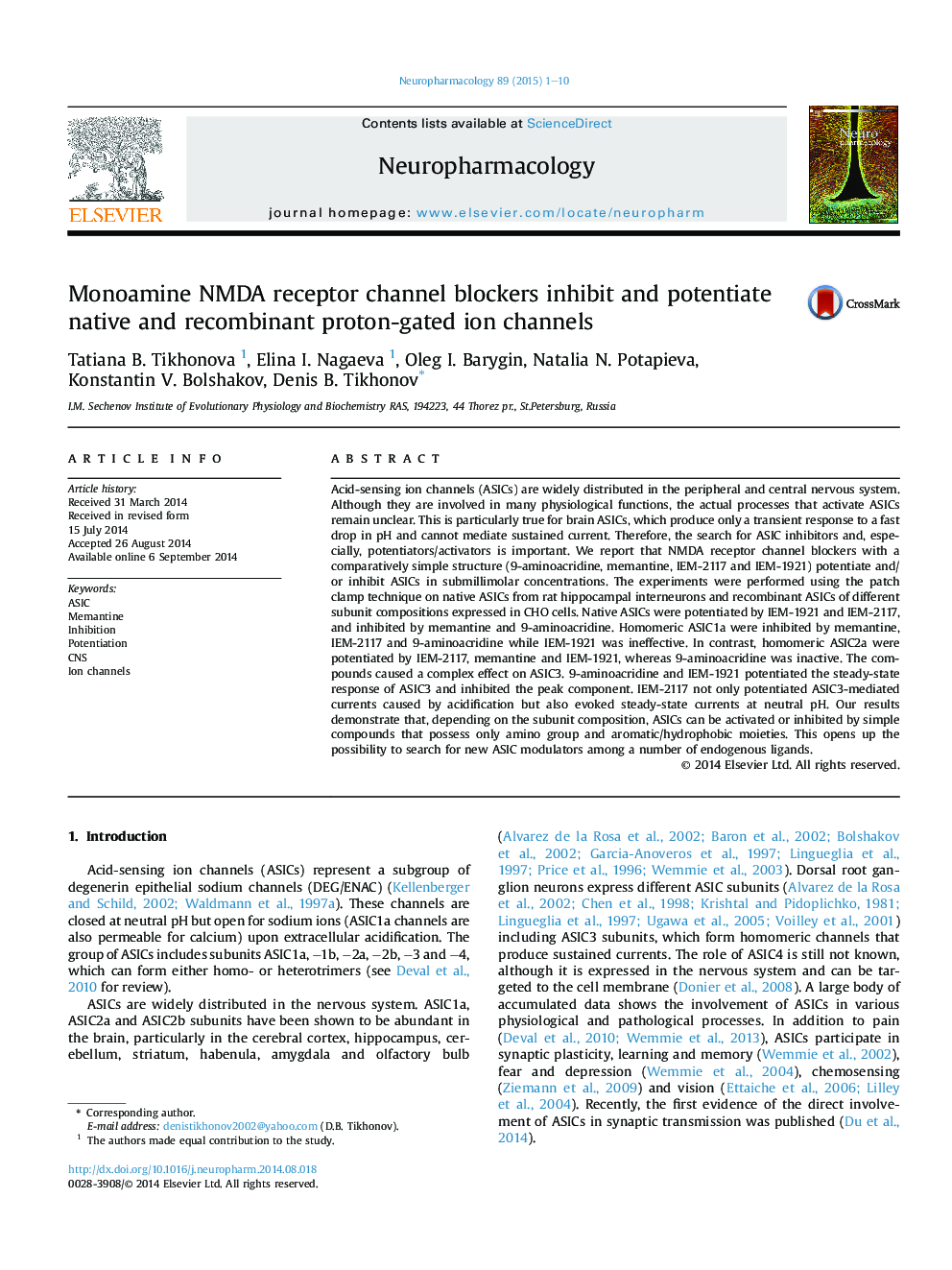| کد مقاله | کد نشریه | سال انتشار | مقاله انگلیسی | نسخه تمام متن |
|---|---|---|---|---|
| 5814247 | 1556625 | 2015 | 10 صفحه PDF | دانلود رایگان |

- Hydrophobic monoamines inhibit or potentiate native ASICs.
- Inhibitory action is seen on ASIC1a while potentiation is seen on ASIC2a.
- Steady-state response of ASIC3 is potentiated.
- Compound IEM2117 causes ASIC3 response and neutral pH.
- Action of monoamines is reduced at strong acidifications.
Acid-sensing ion channels (ASICs) are widely distributed in the peripheral and central nervous system. Although they are involved in many physiological functions, the actual processes that activate ASICs remain unclear. This is particularly true for brain ASICs, which produce only a transient response to a fast drop in pH and cannot mediate sustained current. Therefore, the search for ASIC inhibitors and, especially, potentiators/activators is important. We report that NMDA receptor channel blockers with a comparatively simple structure (9-aminoacridine, memantine, IEM-2117 and IEM-1921) potentiate and/or inhibit ASICs in submillimolar concentrations. The experiments were performed using the patch clamp technique on native ASICs from rat hippocampal interneurons and recombinant ASICs of different subunit compositions expressed in CHO cells. Native ASICs were potentiated by IEM-1921 and IEM-2117, and inhibited by memantine and 9-aminoacridine. Homomeric ASIC1a were inhibited by memantine, IEM-2117 and 9-aminoacridine while IEM-1921 was ineffective. In contrast, homomeric ASIC2a were potentiated by IEM-2117, memantine and IEM-1921, whereas 9-aminoacridine was inactive. The compounds caused a complex effect on ASIC3. 9-aminoacridine and IEM-1921 potentiated the steady-state response of ASIC3 and inhibited the peak component. IEM-2117 not only potentiated ASIC3-mediated currents caused by acidification but also evoked steady-state currents at neutral pH. Our results demonstrate that, depending on the subunit composition, ASICs can be activated or inhibited by simple compounds that possess only amino group and aromatic/hydrophobic moieties. This opens up the possibility to search for new ASIC modulators among a number of endogenous ligands.
Journal: Neuropharmacology - Volume 89, February 2015, Pages 1-10